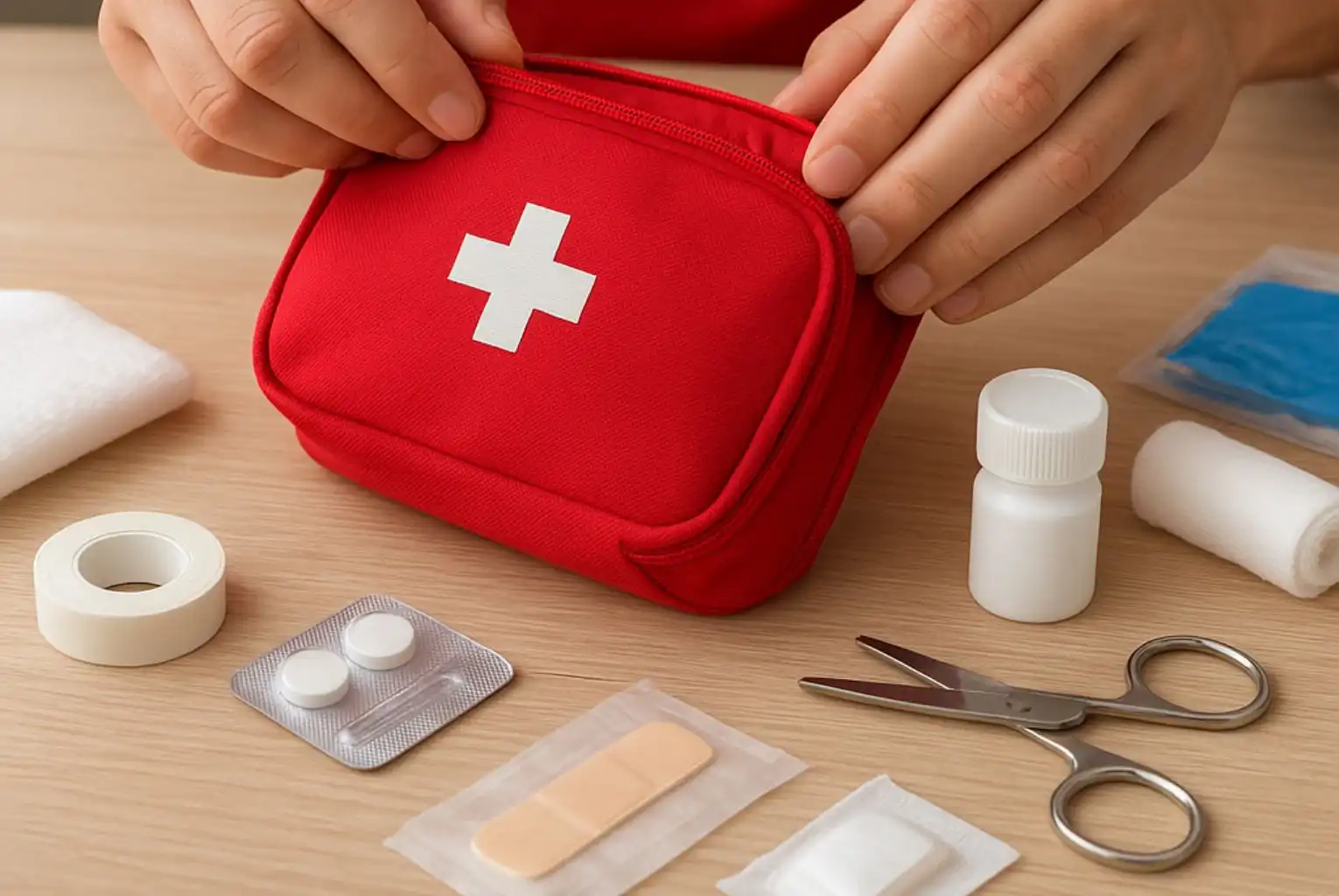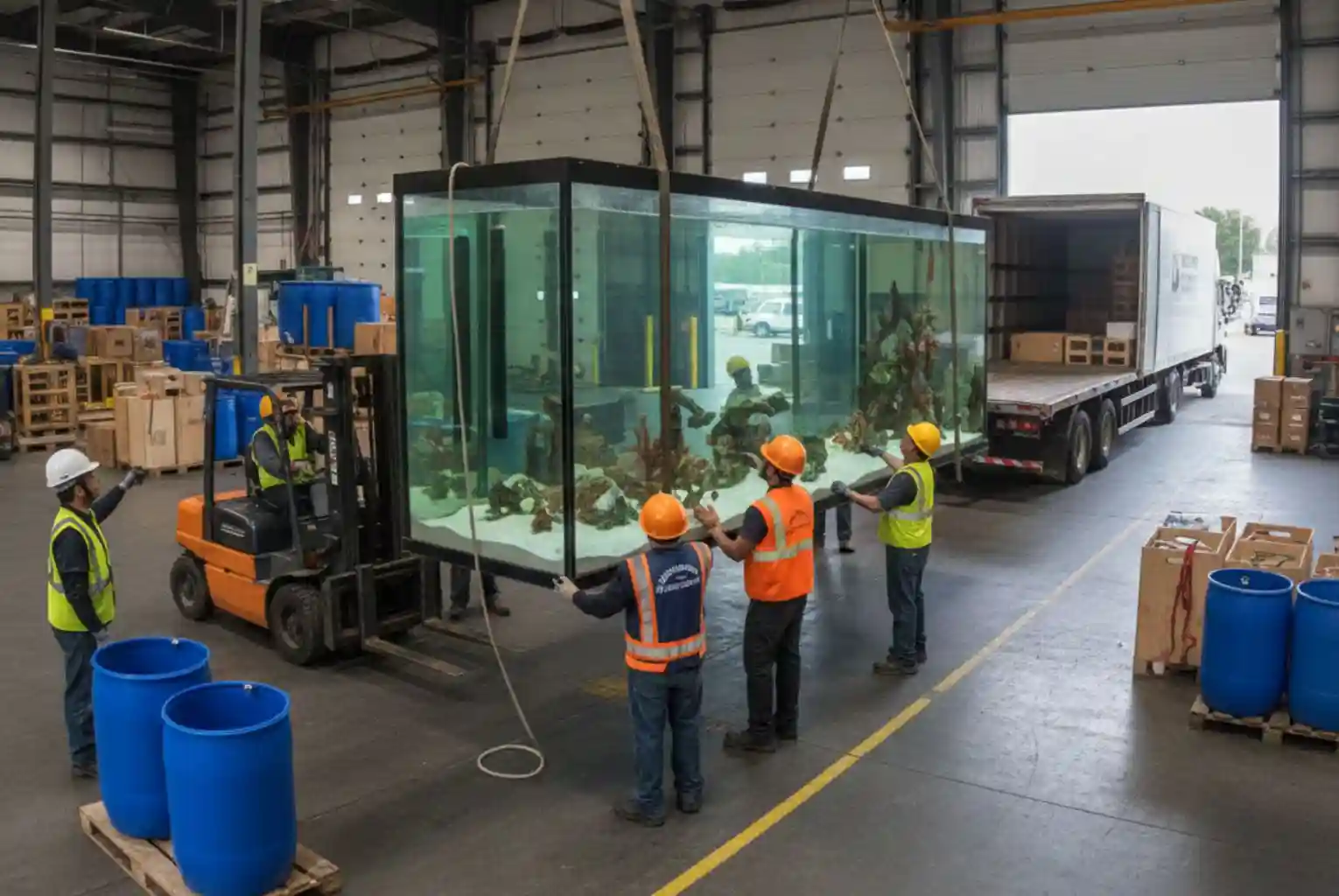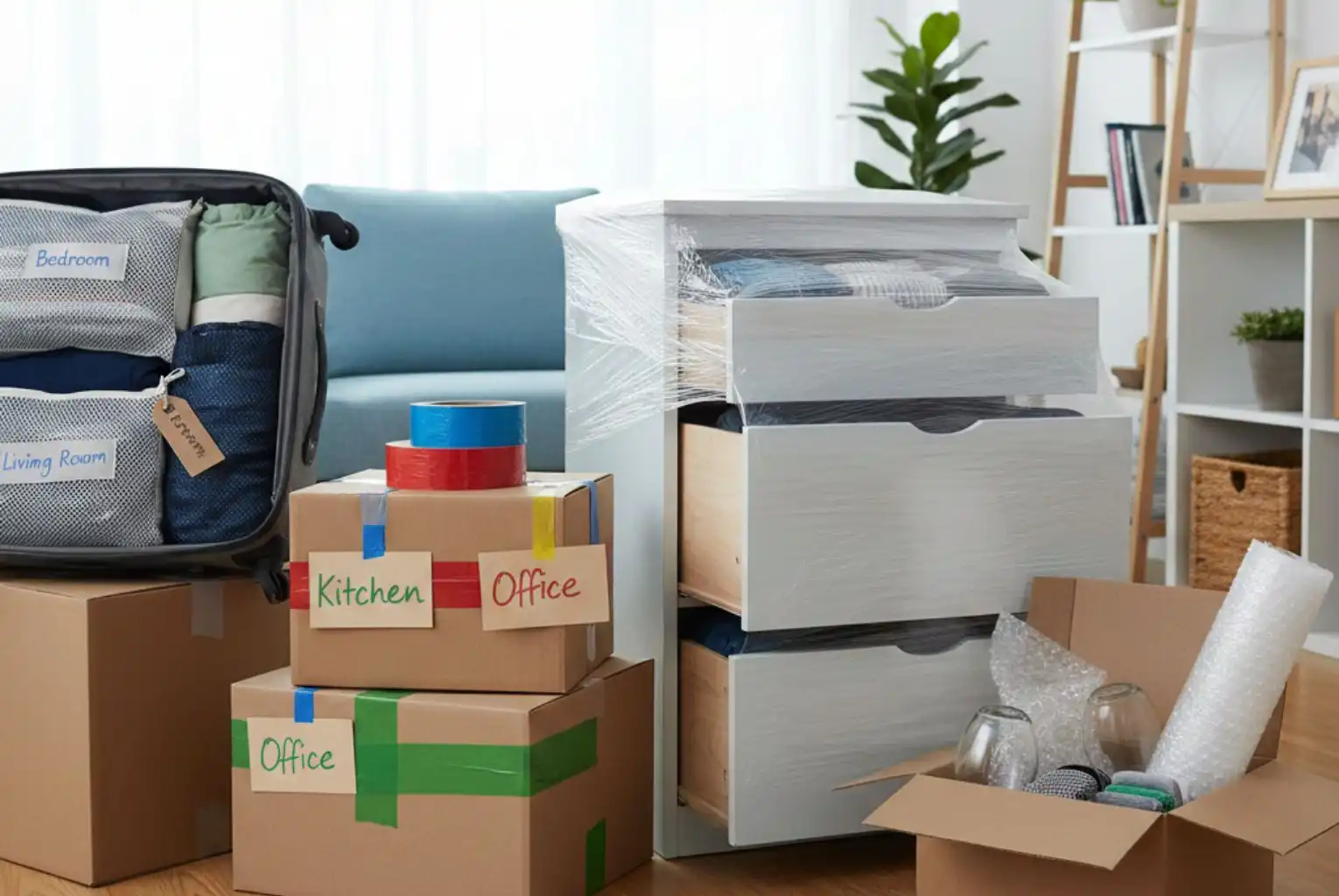STEP-BY-STEP GUIDE TO PREPARING A FIRST AID KIT FOR MOVING

Introduction
Moving into a new home is exciting, but it also comes with its share of challenges. From carrying heavy boxes to handling sharp packing tools, small injuries are quite common on moving day. That’s why preparing a first aid kit for moving is an absolute must. With the right supplies in place, you’ll be ready to manage any minor mishaps and keep the day running smoothly.
Step 1: Create a Checklist of Essentials
The best method to stay organized is to make a checklist of your first aid kit before the day you move. This will ensure that you don't leave anything out. The most common items to keep in mind are gauze pads, antiseptic creams, cotton balls, tweezers, and medical tape. These basic supplies cover most scratches, cuts, and minor accidents. The checklist will also save your time when packing and will ensure that nothing gets forgotten.
Read Also: WHAT FOODS SHOULD YOU KEEP, DONATE, OR DISCARD BEFORE MOVING?
Step 2: Add Medicines for Comfort and Safety
In addition to bandages, be sure to add pain relievers for moving day, including acetaminophen or ibuprofen, to treat headaches and sore muscles that result from lifting or bending. If you are taking daily prescriptions, be sure to carry prescription medications for the day of your move in a separate container and store them in a convenient part of your kit. It is also recommended to carry the most basic allergy medicine and antihistamines in the event of abrupt reactions.
Step 3: Prepare for Cuts, Scrapes, and Bruises
Moving the cardboard box, cutting the edges of furniture, or using other tools could result in scrapes. This is the reason disinfectant wipes to treat scrapes and scratches are essential. Clean the wound prior to applying a gauze or bandage. Do not forget gauze and bandages for moving, as they are useful for a variety of injuries, from tiny nicks to more extensive scrapes. Having these supplies ready allows you to act quickly and prevent infection.
Read Also: HOW VIRTUAL SURVEYS ENHANCE ACCURACY IN MOVING ESTIMATES
Step 4: Keep the Kit Organized and Accessible
It’s not just about what you pack—it’s also about how to pack a first aid kit effectively. Sort items into categories such as medicines in one bag and wound care items in the other, tools such as scissors or tweezers in the third. Keep everything in a durable, waterproof container to guard against spills. The most important thing is to decide the best place to store the first-aid kit on the day of moving. It should be readily accessible, and preferably in your bag, or in the front seat of your vehicle, and not placed inside the moving truck.
Step 5: Plan for Different Scenarios
Even with the best planning, minor incidents are likely to happen. That’s why understanding how to deal with minor injuries on moving day is essential. Apply bandages and antiseptic wipes to treat cuts, use painkillers for body aches, and apply cold packs to treat strains. Pet owners might also consider adding basic animal-safe supplies to their kit.
Read Also: STEP-BY-STEP GUIDE TO MOVING TO GERMANY
Step 6: Include Extra Items for Convenience
A moving day survival kit must include more than first aid. Alongside medical supplies, take tissues, hand sanitizers, as well as bottled water and energy bars. These additional items help keep you at ease and refreshed during long working hours. The convenience of having everything in one place helps make the process simpler and means you don't have to search through boxes to locate essential items.
Step 7: Final Review Before Moving
Prior to the big day, you should take some time to check your important first aid supplies to ensure you are prepared for the move. Make sure nothing has expired, liquids are tightly sealed, and all prescriptions are clearly identified. When you go through your medical kit prior to time and you'll be able to rest assured that you're ready for anything from a minor scratch to an unexpected allergy flare-up.
Read Also: HOW TO PLAN A HASSLE-FREE MOVE WITH A BABY
Why a First Aid Kit Matters
Ultimately, a moving day first aid kit isn’t just about treating injuries— it’s about peace of mind. Moving can be stressful, but having the proper supplies available will ensure that any minor concerns don't escalate into significant delays. From pain relievers and antiseptic wipes to gauze and prescriptions, a thoughtfully packed kit will keep you and your loved ones safe and comfortable.
In conclusion, preparing a first aid kit for moving is a simple step that makes a big difference on moving day. By planning ahead, organizing your supplies, and keeping the kit accessible, you’ll be ready to handle any minor mishaps. For more moving tips and professional relocation services, connect with PM Relocations (PMR)— your trusted partner in making every move smooth, safe, and stress-free.
Our Blogs

LARGE AQUARIUM RELOCATION: WHAT YOU NEED TO KNOW BEFORE MOVING DAY
Relocating a large aquarium is far more delicate than moving regular household items—it requires planning, precision, and the right expertise. From preparing your fish and aquatic plants to safely packing the glass tank, filters, pumps, and other fragile equipment, every step is crucial to protecting your aquatic ecosystem. With PM Relocations, you get trained specialists who understand the sensitivity of aquarium logistics and ensure end-to-end safety throughout the move. This guide walks you through everything you need to know before moving day, helping you enjoy a smooth, stress-free, and professionally handled aquarium relocation.

PMR PLATINUM MOVE ASSISTANCE: REDEFINING LUXURY RELOCATION
Relocating, especially when moving treasured possessions and high-value items, is often stressful. But with PMR Platinum Move Assistance, we don't just move your belongings—we orchestrate a flawless transition. From bespoke packing strategies to white-glove delivery, we redefine what it means to move in luxury. Discover how our dedicated Platinum Move Consultants provide the ultimate in personalized, discreet, and stress-free relocation, ensuring your focus remains solely on settling into your new, opulent space.

5 EASY PACKING HACKS FOR MOVING: MAKE YOUR RELOCATION SIMPLE AND STRESS-FREE
Dreading the boxes and tape? Moving doesn't have to be a chaotic nightmare. In this post, we break down 5 genius packing hacks that professional movers swear by. From keeping your clothes organized to protecting your fragile items without breaking the bank, discover how to save time, money, and your sanity during your next relocation.



